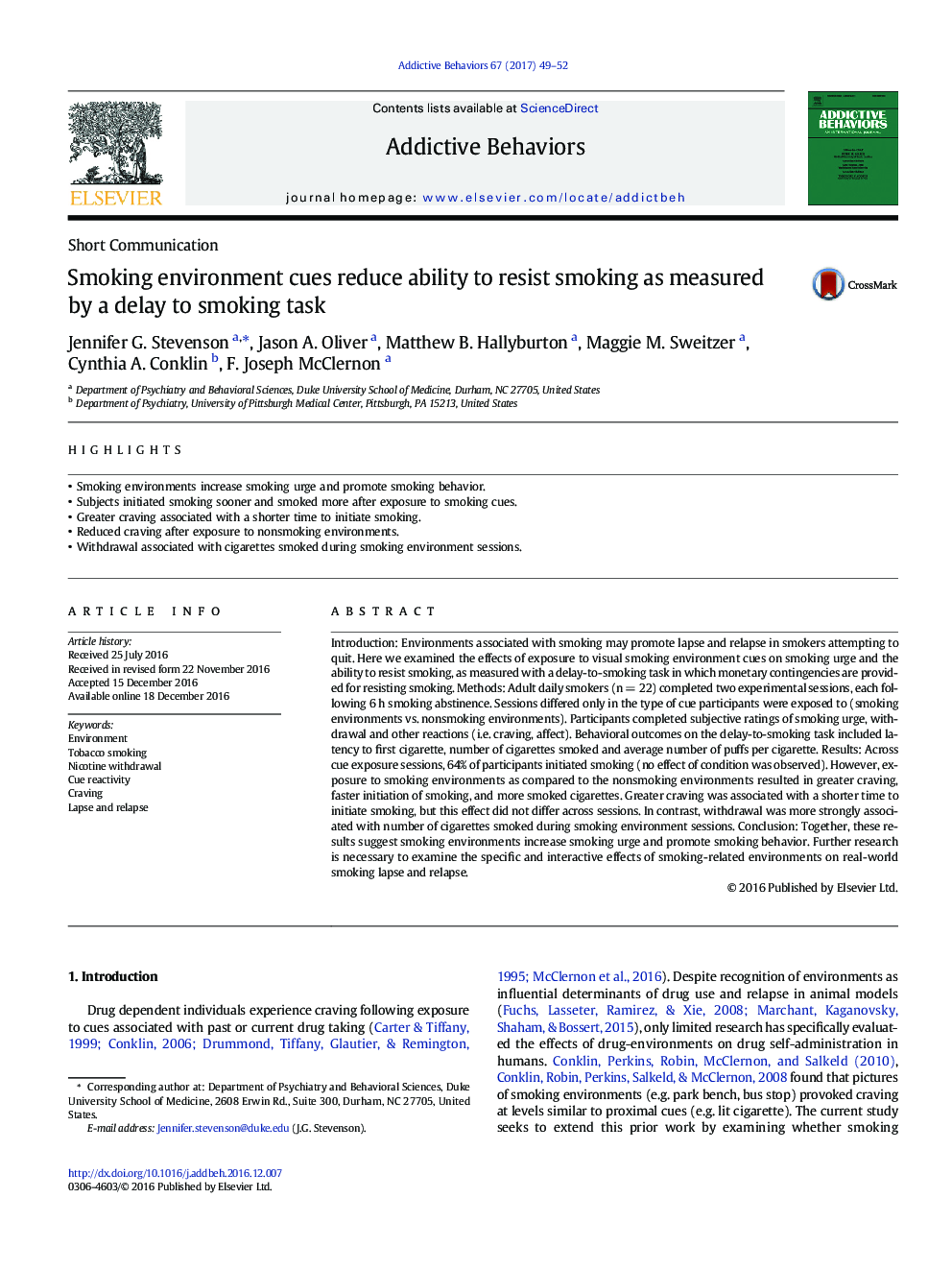| کد مقاله | کد نشریه | سال انتشار | مقاله انگلیسی | نسخه تمام متن |
|---|---|---|---|---|
| 5037846 | 1472504 | 2017 | 4 صفحه PDF | دانلود رایگان |
- Smoking environments increase smoking urge and promote smoking behavior.
- Subjects initiated smoking sooner and smoked more after exposure to smoking cues.
- Greater craving associated with a shorter time to initiate smoking.
- Reduced craving after exposure to nonsmoking environments.
- Withdrawal associated with cigarettes smoked during smoking environment sessions.
Introduction: Environments associated with smoking may promote lapse and relapse in smokers attempting to quit. Here we examined the effects of exposure to visual smoking environment cues on smoking urge and the ability to resist smoking, as measured with a delay-to-smoking task in which monetary contingencies are provided for resisting smoking. Methods: Adult daily smokers (n = 22) completed two experimental sessions, each following 6 h smoking abstinence. Sessions differed only in the type of cue participants were exposed to (smoking environments vs. nonsmoking environments). Participants completed subjective ratings of smoking urge, withdrawal and other reactions (i.e. craving, affect). Behavioral outcomes on the delay-to-smoking task included latency to first cigarette, number of cigarettes smoked and average number of puffs per cigarette. Results: Across cue exposure sessions, 64% of participants initiated smoking (no effect of condition was observed). However, exposure to smoking environments as compared to the nonsmoking environments resulted in greater craving, faster initiation of smoking, and more smoked cigarettes. Greater craving was associated with a shorter time to initiate smoking, but this effect did not differ across sessions. In contrast, withdrawal was more strongly associated with number of cigarettes smoked during smoking environment sessions. Conclusion: Together, these results suggest smoking environments increase smoking urge and promote smoking behavior. Further research is necessary to examine the specific and interactive effects of smoking-related environments on real-world smoking lapse and relapse.
Journal: Addictive Behaviors - Volume 67, April 2017, Pages 49-52
